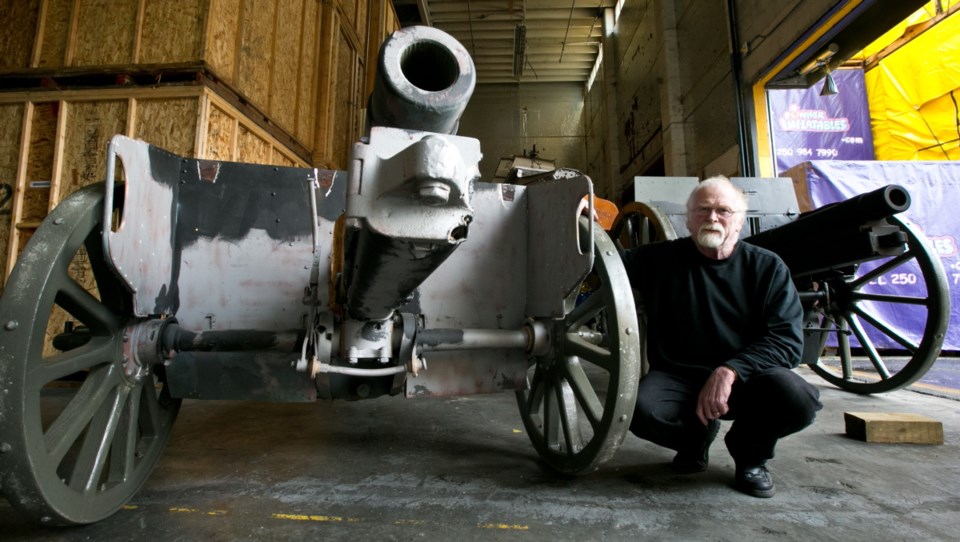In a cavernous storage unit on Viewfield Road, municipal worker Mike Reed is working on a project unlike any other in his career.
The facilities operations supervisor for the Township of Esquimalt cracks a smile as he leans over the smaller of two German field guns.
“This is really the holy grail of artillery pieces,” Reed said of the gun, captured in 1917 by the Victoria-area soldiers of the 2nd Canadian Mounted Rifles.
“It was captured at Vimy Ridge, [where] Canada really came into its own as a nation.”
Reed is restoring the historic guns, which have spent most of their lives in Esquimalt’s Memorial Park, as part of the township’s commemoration of the First World War.
The guns arrived in Esquimalt as two of 516 guns that Canada collected as “war trophies.” The capital region alone received six — one was stationed in Beacon Hill Park, another in Oak Bay and two more outside the legislature, according to Reed.
As the Second World War escalated in 1941, about 75 per cent of the country’s war trophies were turned into scrap metal, melted down and reincarnated as new military material.
The pair in Esquimalt may be the only remaining German field rifles in the province, Reed said.
“These were declared part of the war memorial by the council of the day and were saved from that fate,” he said.
Serial numbers identify the larger gun as a 7.7-cm Feldkanone, model 1896 neuer Art, which the same Victoria battalion captured Sept. 29, 1918, at Cambrai.
The smaller one is a short-range combat weapon designed for anti-tank use, captured April 9, 1917, at La Folie farm. It has smaller wheels and extra weight such as foot stools removed, enabling it to fit in smaller places, dips in landscapes and shell holes.
Reed points to multiple piercings in its armour, as well as the way it is stuck in partial recoil, as evidence that it was abandoned during the battle.
Both guns were placed at Lampson Street School in 1919 and moved to Esquimalt’s Memorial Park in the mid-1920s, where they’ve slowly discoloured, rusted and rotted in the elements.
Reed is committed to extending their lives. And he’s aware of the scrutiny his work will receive from a township with a rich history in combat.
“Esquimalt is a military community,” he said. “I’ve got to cover all the bases.”
Getting it right has turned into an international project. Reed has compared notes with an Ontario group restoring a similar German field gun and purchased a rare First World War-era shovel that would have been strapped to the gun, from a seller in the U.S.
Paint colour has become a particular obsession.
Without colour photos to depend on, Reed was thrilled to find a military paraphernalia store about 30 kilometres outside of Gettysburg, Penn., that has the same 7.7-cm Feldkanone as Esquimalt. The owner had discovered original paint in the creases of another weapon, and Reed is trying to match it. He also asked a Hamburg-based military outfitter to mail a dog-tag painted with “German field grey” when he learned a pressurized can of the paint wasn’t allowed on planes.
Reed expects to finish by early July and said he hopes his work extends the guns’ lives.
“It’s not about preserving the memory of war, it’s about preserving these so people will remember the kinds of sacrifices that were made.”



